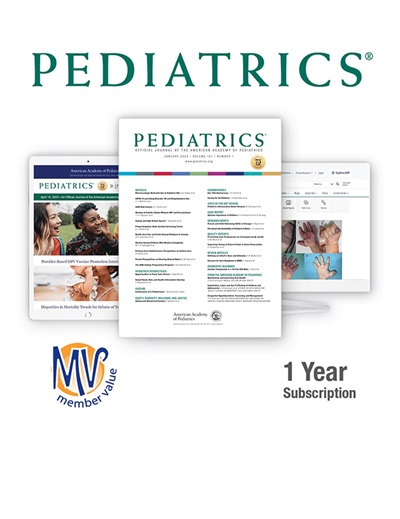Breastfeeding Trends Following the US Infant Formula Shortage.
IF 6.2
2区 医学
Q1 PEDIATRICS
引用次数: 0
Abstract
OBJECTIVE Breastfeeding enhances maternal and child health, yet US breastfeeding rates remain below optimal levels and substantial disparities persist. The 2022 infant formula crisis had the potential to influence infant feeding practices due to formula shortages and fears about the safety of formula feeding in the wake of recalls. This report studies the evolution of breastfeeding-initiation trends during the infant formula crisis and compares the effects across subpopulations. METHODS This study analyzed 2016-2022 national birth certificate data from 47 states and the District of Columbia based on Bayesian structural time-series analysis to measure average changes in breastfeeding-initiation trends and a linear probability model to test for heterogeneous effects. RESULTS During the 2022 infant formula crisis, average breastfeeding-initiation rates increased by 1.96 percentage points (pp) (95% credible interval, 1.68 pp to 2.23 pp) and remained elevated above historical levels at the end of the formula crisis. The increase was particularly pronounced among mothers with lower education levels, those receiving Special Supplemental Nutrition Program for Women, Infants, and Children assistance, residents of less populated counties, Medicaid recipients, and Black mothers, possibly due to their higher reliance on formula feeding. Populations meeting all of these sociodemographic criteria experienced the largest increase in breastfeeding initiation at 6.06 pp (95% confidence interval, 5.26 pp to 6.87 pp). Preexisting disparities in breastfeeding initiation declined in 2022. CONCLUSION The infant formula crisis highlights the potential for addressing breastfeeding disparities and reducing associated child and maternal health risks through targeted interventions to promote breastfeeding.美国婴儿配方奶粉短缺后的母乳喂养趋势。
目的母乳喂养可提高母婴健康,但美国母乳喂养率仍低于最佳水平,且存在巨大差异。2022年婴儿配方奶粉危机有可能影响婴儿喂养做法,因为配方奶粉短缺,以及在召回后对配方奶粉喂养安全性的担忧。本报告研究了婴儿配方奶粉危机期间母乳喂养开始趋势的演变,并比较了不同亚种群的影响。方法本研究分析了2016-2022年美国47个州和哥伦比亚特区的出生证明数据,基于贝叶斯结构时间序列分析来衡量母乳喂养开始趋势的平均变化,并基于线性概率模型来检验异质性效应。结果在2022年婴儿配方奶粉危机期间,平均母乳喂养起始率上升了1.96个百分点(95%可信区间为1.68 - 2.23),并保持高于配方奶粉危机结束时的历史水平。在受教育程度较低的母亲、接受妇女、婴儿和儿童特别补充营养计划援助的母亲、人口较少的县的居民、医疗补助接受者和黑人母亲中,这一增长尤为明显,可能是因为她们更依赖配方奶喂养。符合所有这些社会人口学标准的人群中,母乳喂养开始率的增幅最大,为6.06个百分点(95%置信区间,5.26个百分点至6.87个百分点)。2022年,开始母乳喂养方面先前存在的差距有所下降。结论婴儿配方奶粉危机凸显了通过有针对性的干预措施促进母乳喂养来解决母乳喂养差异并减少相关儿童和孕产妇健康风险的潜力。
本文章由计算机程序翻译,如有差异,请以英文原文为准。
求助全文
约1分钟内获得全文
求助全文
来源期刊

Pediatrics
医学-小儿科
CiteScore
12.80
自引率
5.00%
发文量
791
审稿时长
2-3 weeks
期刊介绍:
The Pediatrics® journal is the official flagship journal of the American Academy of Pediatrics (AAP). It is widely cited in the field of pediatric medicine and is recognized as the leading journal in the field.
The journal publishes original research and evidence-based articles, which provide authoritative information to help readers stay up-to-date with the latest developments in pediatric medicine. The content is peer-reviewed and undergoes rigorous evaluation to ensure its quality and reliability.
Pediatrics also serves as a valuable resource for conducting new research studies and supporting education and training activities in the field of pediatrics. It aims to enhance the quality of pediatric outpatient and inpatient care by disseminating valuable knowledge and insights.
As of 2023, Pediatrics has an impressive Journal Impact Factor (IF) Score of 8.0. The IF is a measure of a journal's influence and importance in the scientific community, with higher scores indicating a greater impact. This score reflects the significance and reach of the research published in Pediatrics, further establishing its prominence in the field of pediatric medicine.
 求助内容:
求助内容: 应助结果提醒方式:
应助结果提醒方式:


